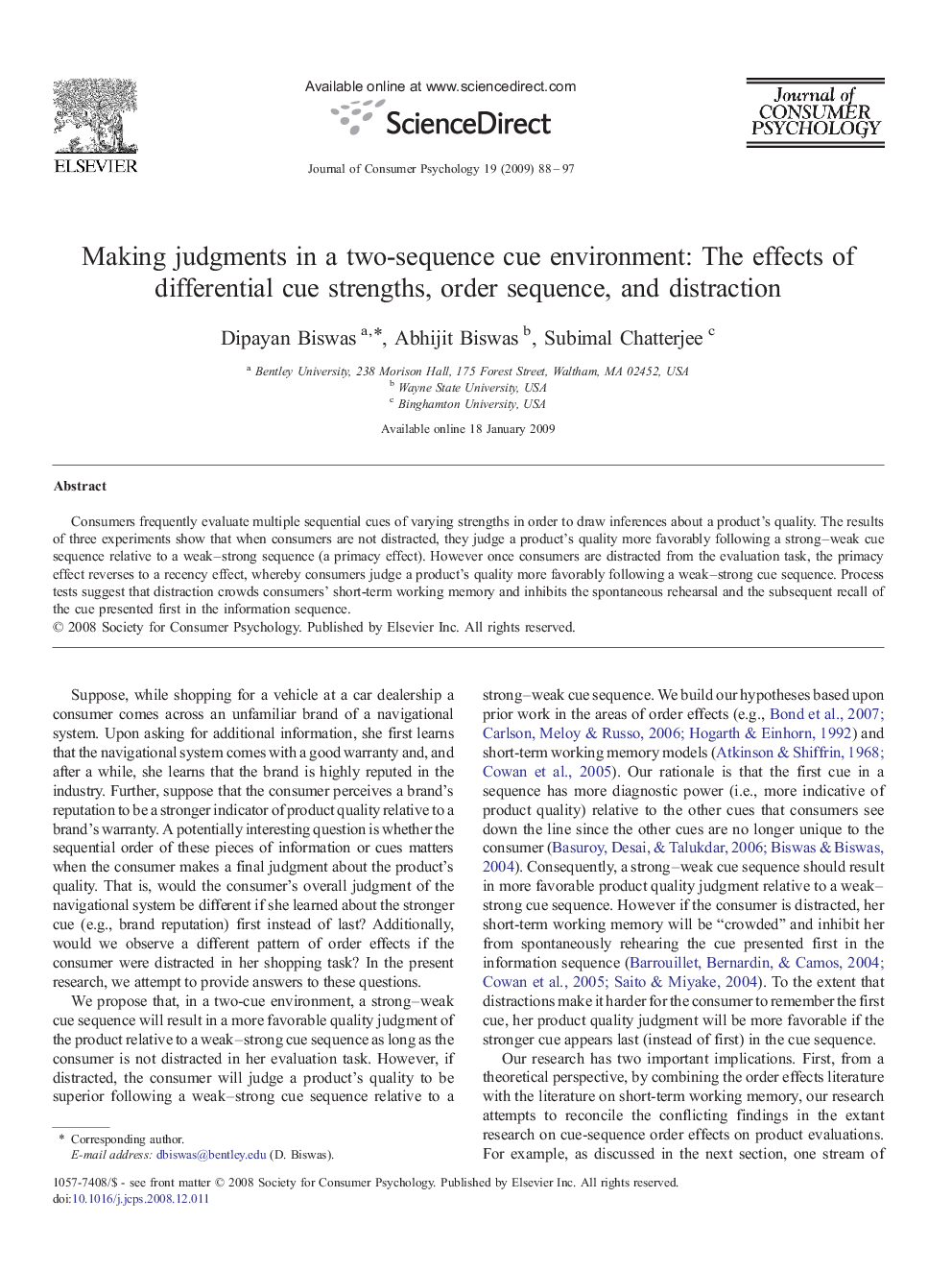| Article ID | Journal | Published Year | Pages | File Type |
|---|---|---|---|---|
| 882538 | Journal of Consumer Psychology | 2009 | 10 Pages |
Consumers frequently evaluate multiple sequential cues of varying strengths in order to draw inferences about a product's quality. The results of three experiments show that when consumers are not distracted, they judge a product's quality more favorably following a strong–weak cue sequence relative to a weak–strong sequence (a primacy effect). However once consumers are distracted from the evaluation task, the primacy effect reverses to a recency effect, whereby consumers judge a product's quality more favorably following a weak–strong cue sequence. Process tests suggest that distraction crowds consumers' short-term working memory and inhibits the spontaneous rehearsal and the subsequent recall of the cue presented first in the information sequence.
